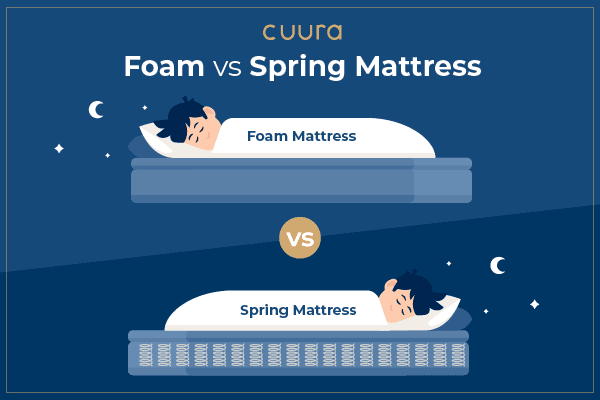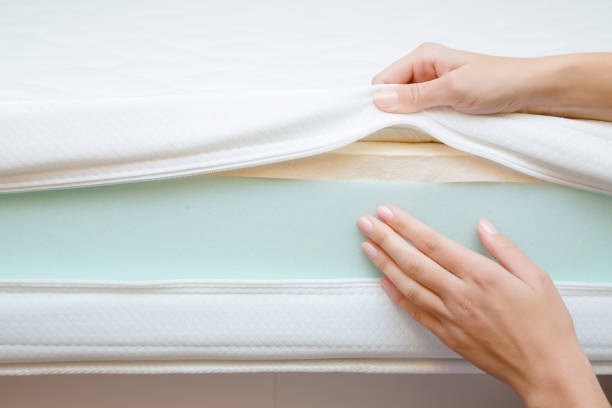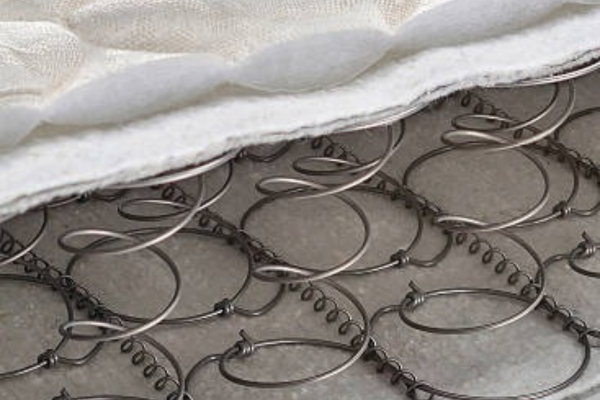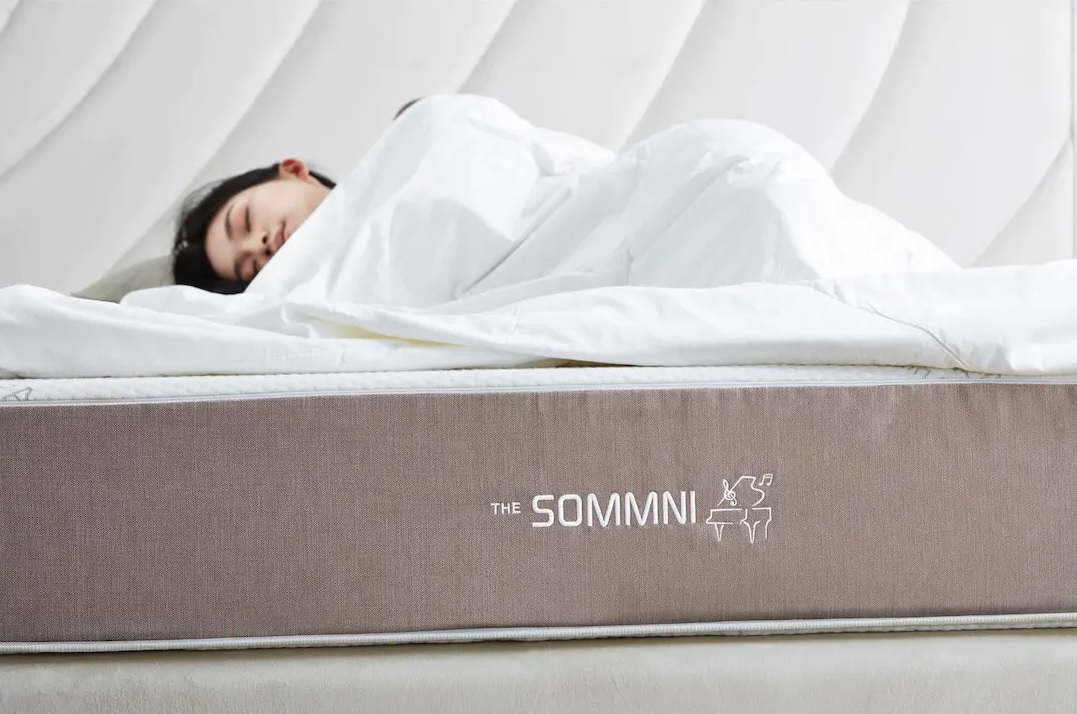Looking for a new mattress can be quite confusing. With so many options out there, it's easy to feel overwhelmed. But don't worry! There's a simple trick to make things easier: just ask yourself if you prefer a foam mattress or a spring mattress.
In this article, we'll talk about the differences between foam and spring mattresses. By understanding these two types better, you'll be able to make an informed decision and find the perfect mattress for your needs. So let's dive in and get you on your way to a great night's sleep!
Overview of Foam vs Spring Mattress
| Foam Mattress | Spring Mattress |
|
|
|
|
|
|
|
|
|
|
|
|
|
|
|
|
What is a Foam Mattress?
A foam mattress is a type of bed that is made entirely from different types of foam, including memory foam and polyurethane foam. These foams are specially designed to provide comfort and support while you sleep. The memory foam contours to your body, relieving pressure points and reducing motion transfer.
The polyurethane foam adds durability and structure to the mattress. Together, these foams create a soft and supportive surface that can help you get a good night's sleep. Foam mattresses are known for their ability to adapt to your body shape, promoting a comfortable and restful sleep experience.
Pros of Foam Mattresses:
Exceptional Comfort: Foam mattresses are known for providing excellent comfort and support. The foam conforms to your body, relieving pressure points and ensuring a more comfortable sleep experience.
Motion Isolation: Foam mattresses excel at isolating motion. If you share your bed with a partner who tends to toss and turn or get up during the night, you won't feel their movements as much, allowing for uninterrupted sleep.
Allergy-Friendly: Foam mattresses are hypoallergenic and resist dust mites and other allergens. If you suffer from allergies, a foam mattress can provide a healthier sleeping environment and reduce the risk of triggering allergic reactions.
Durability: High-quality foam mattresses are designed to last. They are resistant to sagging and deformation over time, ensuring that your investment will provide you with long-lasting comfort and support.
Pain Relief: Foam mattresses are often recommended for individuals with chronic pain or specific body conditions. The foam's ability to contour to your body shape can alleviate pain and provide relief for aches and pressure points.
Wide Variety of Options: Foam mattresses come in various types, including memory foam, latex foam, and gel-infused foam. This variety allows you to choose the type of foam that suits your preferences, sleeping position, and comfort level.
Cons of Foam Mattresses:
Initial Odour: When you first unbox a foam mattress, you may notice a temporary odour known as off-gassing. This smell is harmless and usually dissipates within a few days, but it can be bothersome for some people.
Heat Retention: Traditional foam mattresses have been known to trap body heat, potentially making you feel too warm during the night. However, advancements in foam technology have led to the development of cooling gel-infused foams and breathable covers to address this issue.
Weight: Foam mattresses are generally heavier than other types of mattresses, which can make moving or rotating them more challenging. If you anticipate frequently changing the position of your mattress, this weight might be a minor inconvenience.
Price: Foam mattresses tend to be more expensive compared to traditional spring mattresses. While they offer numerous benefits, the higher price tag may be a consideration for those on a tight budget.
Limited Bounce: Foam mattresses have less bounce and responsiveness compared to spring mattresses. If you prefer a mattress with a more springy feel or enjoy activities like jumping on the bed, a foam mattress may not be the best fit.
Potential for Sinking: Some individuals find that foam mattresses can make them feel like they're sinking into the bed. While this sinkage can be a desirable feature for some, others may prefer a firmer and more supportive surface.
It's essential to note that the pros and cons of foam mattresses can vary depending on personal preferences and individual needs. Consider these points and weigh them against your own sleep preferences to make an informed decision.
What is a Spring Mattress?
Photo by lindo12345 on istock
A spring mattress is a type of bed mattress that is constructed with metal springs or coils, along with layers of foam for added comfort. These metal springs or coils serve as the foundation of the mattress, providing support to the sleeper's body.
The springs are designed to compress and expand based on the weight and movement of the individual, adapting to their sleeping positions. The thin layers of foam added on top of the springs offer additional cushioning and contouring, enhancing the overall comfort of the mattress. Spring mattresses are popular for their durability, affordability, and the bouncy feel they provide while sleeping.
Pros of Spring Mattress:
Comfort: Spring mattresses are known for their comfortable and supportive feel. The springs distribute your body weight evenly, relieving pressure points and providing a comfortable sleep surface.
Durability: High-quality spring mattresses are built to last. They are designed to withstand regular use and retain their shape over time, ensuring long-term durability and value for money.
Breathability: Spring mattresses allow for better airflow compared to some other types of mattresses. This helps to regulate your body temperature while you sleep, preventing overheating and promoting a cooler, more comfortable sleep environment.
Support: The coil system in spring mattresses offers excellent support to your body. The springs adjust to your body's contours, providing proper spinal alignment and reducing the risk of back and neck pain.
Affordability: Spring mattresses tend to be more affordable compared to other types, such as memory foam or latex mattresses. This makes them a popular choice for those on a budget or looking for a cost-effective bedding option.
Availability: Spring mattresses are widely available in various sizes, styles, and firmness levels. You can easily find them in local stores or online, offering a wide range of options to suit different preferences and needs.
Cons of Spring Mattress:
Motion Transfer: One downside of spring mattresses is that they can transfer motion. When one person moves or gets out of bed, the movement can be felt by the other person sharing the bed, potentially disrupting their sleep.
Noise: Spring mattresses can produce noise when you move or shift positions during sleep. The coils may creak or squeak, which can be bothersome and disturb your sleep or that of your partner.
Allergens and Dust Mites: The construction of spring mattresses can create spaces for allergens, dust mites, and other microscopic organisms to accumulate. This can be problematic for people with allergies or respiratory conditions.
Limited Contouring: Unlike memory foam or latex mattresses, spring mattresses have limited contouring abilities. They may not conform as closely to your body's curves, which could lead to less pressure relief, especially for individuals with specific orthopaedic needs.
Weight Distribution: The coil system in spring mattresses may not distribute weight evenly. This can cause pressure points to develop in certain areas, potentially leading to discomfort or aches, especially for those with existing joint or muscle issues.
Lifespan: While spring mattresses are durable, they may have a shorter lifespan compared to other mattress types. Over time, the coils can lose their supportiveness, leading to sagging or uneven wear, which may necessitate replacing the mattress sooner than expected.
Remember that these pros and cons can vary depending on the specific quality and design of the spring mattress you choose. It's essential to consider your personal preferences, sleeping habits, and any specific health considerations when selecting a mattress.
Key Differences Between Foam and Spring Mattresses
Foam and spring mattresses have some key differences that you might want to consider when choosing your ideal mattress. Foam mattresses, like memory foam or latex, are super comfy as they mould to your body's shape, providing great pressure relief and support.
They're also great at isolating motion, so you won't disturb your partner if you tend to toss and turn at night. On the other hand, spring mattresses have a bouncy feel thanks to their metal coil construction. They offer better airflow, keeping you cool during those hot summer nights.
Plus, spring mattresses are generally more durable and can last longer. However, keep in mind that spring mattresses may transfer motion more easily and might not contour to your body as well as foam mattresses do. So, it all comes down to your personal preferences, comfort needs, and how you like to sleep.
FAQs
1. Which is better: foam or spring mattress?
When it comes to choosing between a foam mattress and a spring mattress in Malaysia, most people would be satisfied with a high-quality foam mattress. Foam provides a balance between support and comfort, making it suitable for various sleep positions. Foam beds are especially preferred by side sleepers as they conform well to the body's shape.
However, individuals who tend to sleep hot might prefer a spring mattress due to its better airflow, keeping the bed cooler at night. For heavier sleepers or those who sleep on their stomachs, opting for an innerspring, hybrid, or very firm foam bed is recommended to ensure adequate support, as softer foam models may cause excessive sinking and discomfort.
2. What mattress is appropriate for humid weather?
It’s easy to feel hot when sleeping in the humid Malaysian climate. Thus, you might want to avoid mattresses that trap heat, like some foams. Spring mattresses generally sleep cooler, but don't worry, there are also plenty of new foam and hybrid models designed with features to keep you cool and comfortable throughout the night. So, consider checking out those options before making your choice!
3. How long do they last?
Foam mattresses generally have a decent lifespan, but if you tend to sweat a lot because of a warm climate or health issues, they may not last as long. Sweat absorption can harm the mattress and lead to unpleasant odours. In such cases, it might be worth considering a spring mattress, as they are known for their durability and can last for around 8 to 10 years, providing you with long-lasting comfort and support.
4. Which is better for your back spring or foam?
When it comes to choosing between spring and foam mattresses for your back, it ultimately depends on your personal preference and specific needs. Spring mattresses are known for their excellent support and responsiveness, as the coils provide a firm and buoyant feel. They can be beneficial for people who require extra support or who prefer a more traditional mattress feel.
On the other hand, foam mattresses, such as memory foam or latex, offer contouring and pressure relief by moulding to your body's shape. This can be advantageous for individuals seeking a softer and more cushioning surface for their back. Ultimately, it's crucial to try out different mattresses and consider factors such as your sleep position, back condition, and personal comfort preferences to determine which option is better suited for your back.
Our Top Pick: SOMMNI 100% Natural Latex & Foam Mattress
SOMMNI King Mattress - Up to 150 Nights Sleep Trial
Sommni is a mattress which cleverly blends natural latex and foam to outdo traditional foam mattresses, offering a comfortable and cool sleep. Unlike most foam mattresses, SOMMNI's design promotes airflow and prevents overheating for a consistently refreshing sleep.
At its core, the mattress uses plush memory foam that shapes around your body, offering all-night comfort. The outer layer features a blend of aloe vera fabric and cotton & polyester, adding a natural touch for a healthier sleep.
Made with 100% certified natural latex, the mattress provides firm support and pressure relief with its elastic design. The high-density foam not only helps distribute weight evenly but also promises long-lasting durability. To top it all, its unique structure of 3D natural latex improves airflow, making your sleep cooler and healthier.
Summary
In conclusion, when choosing between a foam and spring mattress, it ultimately comes down to personal preference and specific needs. Foam mattresses offer excellent contouring and pressure relief, making them ideal for individuals seeking maximum comfort and support.
On the other hand, spring mattresses provide superior bounce and breathability, making them suitable for those who prefer a more traditional feel. Check out our range of mattresses offered online in Malaysia, where you can find the best bed that suits your needs.




